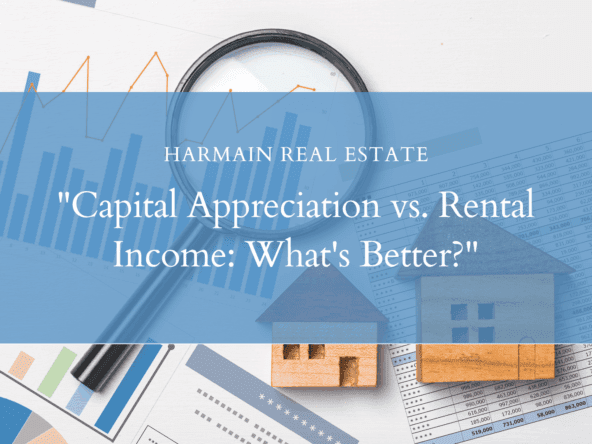Building Bridges: Community Engagement Strategies for Developers
in the ever-evolving world of technology, developers are often hailed as the architects of innovation—constructing digital frameworks, coding solutions, and engineering experiences that shape the way we live and connect. But building something valuable goes beyond lines of code; it requires understanding the people who will use it and fostering genuine connections with the communities surrounding it. Community engagement is not just a tool for feedback or a means to troubleshoot—it’s a pathway to collaboration, trust, and growth.
Whether you’re a solo developer launching a passion project, part of a team creating enterprise applications, or contributing to open-source efforts, engaging with your community can transform your work from functional to truly impactful. In this article, we’ll explore actionable strategies to bridge the gap between developers and diverse communities, helping you create tech solutions that resonate, empower, and inspire.
Table of Contents
- Building Bridges with Local Networks
- Designing Inclusive Platforms for Genuine Interaction
- Leveraging Digital Tools to Foster meaningful Connections
- Measuring Impact and Iterating for sustainable Growth
- Q&A
- Key Takeaways
Building Bridges with Local Networks
- Identify Volunteering Opportunities: Join local causes that align with the mission of your project.
- Establish Advisory Boards: Include representatives from diverse community groups.
- Offer Educational Resources: Provide free coding workshops or technology literacy programs.
- Exchange Knowledge: Partner with local universities or research centers to enhance your developmental impact.
| Action | Benefit |
|---|---|
| Host a Community Hackathon | Fosters innovation and collaboration |
| Use Local Feedback Surveys | Improves alignment with community needs |
| Collaborate with Local businesses | Enhances resource-sharing opportunities |
Designing Inclusive Platforms for genuine Interaction
building an inclusive platform requires a thoughtful design approach that prioritizes accessibility, diversity, and authenticity. Beyond simply meeting accessibility standards, developers should aim to create spaces where all users feel seen and heard. This means integrating features like adjustable text sizes, intuitive navigation, and multi-language support. Incorporating personalization options, such as theme preferences or context-aware suggestions, can further help users feel valued and comfortably engaged. By designing for the broadest spectrum of users, platforms foster trust and encourage meaningful participation.
- Content moderation tools that promote respectful dialog and filter harmful behavior.
- Inclusive prompts that invite different perspectives and discourage echo chambers.
- Obvious community guidelines written in simple, user-friendly language.
- Feedback systems that allow users to share thoughts on platform features.
To go one step further, developers can incorporate data-driven insights to enhance genuine interaction by observing user behavior within acceptable privacy limits. Here’s an example layout guide:
| Feature | Purpose | Impact |
|---|---|---|
| Real-time captioning | Support users with hearing challenges | More inclusive discussions |
| Localized content | Tailor experiences to cultural contexts | Higher engagement rates |
| Anonymous feedback | Enable honest user input | Improved feature alignment |
Leveraging Digital Tools to Foster Meaningful Connections
| Tool/Feature | Purpose | Use Case |
|---|---|---|
| Slack | Real-time communication | Community problem-solving and quick updates |
| BuddyPress | Community building | Facilitating deeper member connections |
| social Media APIs | Extended reach | Sharing updates and engaging wider audiences |
By thoughtfully combining these digital tools, developers can craft spaces where their communities not only feel heard but motivated to actively participate.
Measuring Impact and Iterating for Sustainable Growth
Understanding the effectiveness of your community engagement initiatives requires continuously tracking key metrics and adapting strategies accordingly. To start, identify specific, actionable KPIs such as user retention rates, forum activity levels, or the number of meaningful interactions your team has with community members. Use tools like analytics dashboards or community-specific plugins to collect and analyze this data. This evidence-based approach provides insights into what’s working and where your efforts might require refinement. Remember, not all growth is immediate—long-term sustainability often hinges on trial, error, and iteration.
once you’ve gathered data, iterative improvement should be your mantra. Analyze patterns, experiment with different engagement strategies, and gather feedback from community members. Such as, if feedback suggests your forum functionality isn’t intuitive, simplify it or host a tutorial webinar. Use a structured approach to apply iterative updates, such as the table below:
| Community Feedback | Action Taken | Outcome |
|---|---|---|
| “Difficult to find updates on key features.” | Launched a monthly newsletter and pinned declaration posts in the forums. | 50% increase in feature awareness. |
| “We need more technical deep dives.” | Organized live-coding webinars and blog posts. | Higher engagement rates during Q&A sessions. |
By measuring your initiatives and refining them incrementally, you’ll foster a more engaged, loyal, and thriving developer community.
Q&A
Q1: Why is community engagement important for developers?
A: Community engagement allows developers to connect with their end-users, gain valuable feedback, and build trust. It fosters collaboration, helps identify real-world use cases, and creates a loyal user base that actively advocates for the product or platform.
Q2: What are some effective strategies for developers to engage with their communities?
A: Developers can host virtual meetups or webinars, participate in online forums, contribute to open-source projects, and maintain transparency through regular updates and roadmaps. Creating engaging content like blogs, tutorials, and Q&A sessions can also nurture strong bonds with their community.
Q3: How can developers identify the right platforms for building a community?
A: Developers should consider where their target audience is most active. Whether it’s GitHub for technical discussions, Discord and Slack for real-time interactions, or Twitter and LinkedIn for broader outreach. Observing audience behavior and experimenting with platforms can help uncover the best fit.
Q4: How can developers handle negative feedback from their community?
A: Developers should approach negative feedback with humility and a problem-solving mindset. Responding constructively, acknowledging valid concerns, and addressing them promptly shows a commitment to improvement. Turning criticism into a growth opportunity strengthens credibility.
Q5: What makes a developer community sustainable in the long term?
A: A sustainable developer community thrives on mutual respect, regular engagement, and shared purpose. Providing consistent value—such as new features, educational resources, or collaboration opportunities—while ensuring inclusivity and recognizing contributors keeps the community vibrant and active.
Key Takeaways
In the ever-evolving landscape of development, community engagement isn’t just a fleeting trend—it’s a vital cornerstone for building meaningful connections and driving lasting impact. From fostering dialogue to cultivating trust, the strategies outlined in this article offer a roadmap to transforming technical expertise into collaborative progress.
Every developer has the power to shape not just code, but communities—a chance to listen, learn, and grow alongside those they serve. Whether it’s through transparent communication, inclusive practices, or active involvement, community engagement isn’t about perfection—it’s about perseverance and authenticity.
As you step forward, remember that the seeds of engagement you sow today could grow into the bridges of collaboration tomorrow. Developers don’t just create—they inspire communities to innovate, connect, and thrive. Let this be your invitation to take a bold step into the heart of meaningful change—one strategy, one connection, one project at a time.




